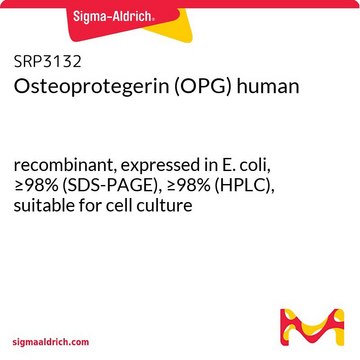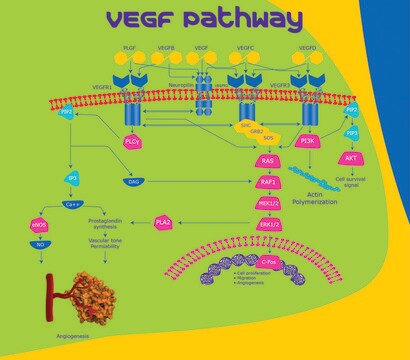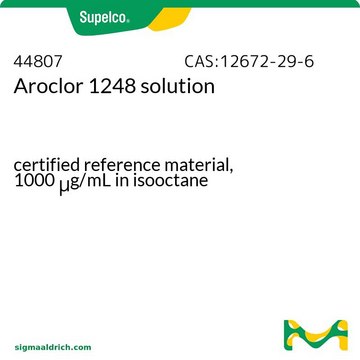SRP6061
VEGFR2 human
recombinant, expressed in insect cells, ≥95% (SDS-PAGE)
Sinonimo/i:
Fetal liver kinase 1, Kinase insert domain receptor, Protein-tyrosine kinase receptor flk-1
About This Item
Prodotti consigliati
Origine biologica
human
Ricombinante
expressed in insect cells
Saggio
≥95% (SDS-PAGE)
Stato
lyophilized
PM
116
Confezionamento
pkg of 10 μg
Condizioni di stoccaggio
avoid repeated freeze/thaw cycles
N° accesso NCBI
Condizioni di spedizione
wet ice
Temperatura di conservazione
−20°C
Informazioni sul gene
human ... VEGFR2(3791)
Descrizione generale
Azioni biochim/fisiol
Stato fisico
Nota sulla preparazione
Ricostituzione
Altre note
Codice della classe di stoccaggio
13 - Non Combustible Solids
Classe di pericolosità dell'acqua (WGK)
WGK 3
Punto d’infiammabilità (°F)
Not applicable
Punto d’infiammabilità (°C)
Not applicable
Scegli una delle versioni più recenti:
Certificati d'analisi (COA)
Ci dispiace, ma al momento non ci sono COA disponibili online per questo prodotto.
Se ti serve aiuto, non esitare a contattarci Servizio Clienti
Possiedi già questo prodotto?
I documenti relativi ai prodotti acquistati recentemente sono disponibili nell’Archivio dei documenti.
Il team dei nostri ricercatori vanta grande esperienza in tutte le aree della ricerca quali Life Science, scienza dei materiali, sintesi chimica, cromatografia, discipline analitiche, ecc..
Contatta l'Assistenza Tecnica.







